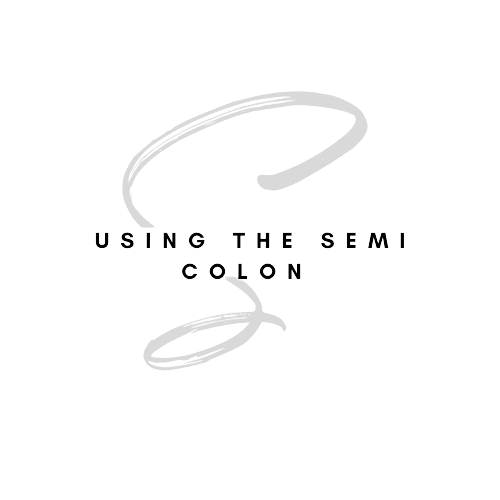Using the Semi Colon
 Using the semi colon correctly can be a bit tricky! There are quite a few rules to follow.
Using the semi colon correctly can be a bit tricky! There are quite a few rules to follow.
Defining the Semi Colon
Before we begin, it may be helpful to define the semi colon. This punctuation mark is often used to signify a pause between two independent clauses. (An independent clause can be defined as a basic sentence that can stand alone, but is often one part of a larger sentence – or two independent clauses). Remember that the pause indicated by this particular punctuation mark is more obvious than when using a comma.
Let’s continue!
In particular, the semi colon is used to join two independent clauses without a coordinating conjunction. (A coordinating conjunction can be defined as a conjunction that joins together an (equal) word, phrase, or even clause. Some examples of coordinating conjunctions include the terms for, and, nor, but, or, yet, so.) Tip: An easy way to remember your coordinating conjunctions is to think of the FANBOYS acronym!
A coordinating conjunction must be used to join two independent clauses when using a comma.
Ok, I understand the difference between the semi colon and the comma. But wait! What’s the difference with the colon?
In contrast to the semi colon’s focus on joining two independent clauses, the colon is used to provide information, explanation, or summary on a previous independent clause. It can also be used when giving an example for the first independent clause. In addition, the colon is commonly used to introduce lists and quotations. Further uses of the colon include indicating Bible verses and ratios.
An example of using the colon in a Bible verse: Isaiah 41:10.
An example of using the colon in a ratio: 3: 1.
Using the Semi Colon
This punctuation mark has three main uses.
1. First, as mentioned in the definition section, the semi colon is used to join two independent clauses without a coordinating conjunction.
- Example: I am very tired; I don’t want to get out of bed;
This sentence could also be written with a period.
- Example: I am very tired. I don’t want to get out of bed.
It could also be written using a comma and a coordinating conjunction.
- Example: I am very tired, so I don’t want to get out of bed.
2. Next, the semi colon works well when two independent clauses are separated by a transitional word. (Transitional words link ideas in your writing. Examples of transition words, include—but are not limited to—however, subsequently, additionally, and lastly.)
- Example: Natalia prefers the mountains; however, she will visit the beach since her partner enjoys it.
This sentence can also be rewritten using a period.
- Example: Natalia prefers the mountains. However, she will visit the beach since her partner enjoys it.
3. Finally, the semi colon is used when you have an independent clause that contains a series of items separated by punctuation marks, such as a comma.
- Example: I travelled to Guatemala, including Guatemala City, Huehuetenango, and Quetzaltenango; El Salvador, including San Salvador, Santa Ana, and San Miguel, and Honduras, including Tegucigalpa, La Campa, and Gracias.
These sentences could also be rewritten using periods.
- Example: I travelled to Guatemala, including Guatemala City, Huehuetenango, and Quetzaltenango. Later, I travelled to El Salvador, including San Salvador, Santa Ana, and San Miguel. At the end of my trip, I travelled to Honduras, including Tegucigalpa, La Campa, and Gracias.
A good resource is “5 Ways to Use a Semicolon, With Examples.”
Semi Colon Capitalization Rules
One important rule to remember when using this punctuation mark is that it does not signify the end of a sentence. Therefore, a lowercase letter should be used to begin the second independent clause.
Example: I do not like to east beans; however, I will eat them if they are covered in butter.
Stay tuned for additional parts of this series, which will focus on the en dash, hyphen, and colon in-depth and offer tips, tricks, and best practices. Be sure to check out my past blogs on the em dash, serial comma, and collective nouns!
What’s your favourite punctuation mark? I’d love to hear your suggestions! Questions? Comments? For copy editing projects, please visit my copy editing page, which lists my full experience and rates. Contact me for more information about your project needs.
